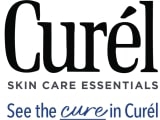The term “free radicals” gets tossed around quite a bit in the health and beauty community. That's for good reason. Free radicals are responsible for breaking down our skin’s collagen, resulting in unflattering skin blemishes like wrinkling, dark spots, fine lines and loose, saggy skin.
While we have to cover some basic chemistry to explain free radicals, this important information will help you understand what free radicals are, where they come from, and how they can potentially damage your skin. This will make you better informed and help you make the right adjustments to protect your skin and keep it healthy.
The Impact of Free Radicals on Your Skin

1. What are Free Radicals?
Before we dive right into explaining free radicals, we need a quick reminder of some basic chemistry. Our world is made of molecules, and molecules contain atoms. What you need to know about atoms is that they have tiny electrons orbiting them. These electrons like to be in pairs. Think of it as a buddy system. The number one rule of the buddy system is never to leave your buddy so everyone is safe.
Electrons like to adhere to the buddy system strictly, and when they do, everything is normal and safe. But sometimes, the structure of atoms breaks down and these electron pairs split up. If you take nothing else from this brief chemistry lesson, know that these atoms containing unpaired electrons (electrons without a buddy) are what are known as free radicals, and they can be very harmful.
Free radicals can be produced in the body naturally, but they’re also introduced from outside sources, like pollution. Pollution is a big reason why free radicals are becoming more prevalent. Where you live or work can play a significant role in how much pollution you encounter, and therefore the degree to which your skin is endangered. For example, if you live in an industrial area, you may be at a higher risk of exposure due to a higher concentration of pollutants. Many types of pollutants are known to cause an increase in free radicals:
● Smog
● Dust
● Cigarette smoke
● Household cleaners
● Farming pesticides
2. How Free Radicals Hurt the Skin
Your body is roughly 60 percent water. That is a lot of H2O. Remember, that “O” stands for Oxygen. In fact, your body contains billions of oxygen atoms and some of these oxygen atoms may undergo a process called oxidation.
Oxidation is when your body’s oxygen atoms spit and become free radicals. It’s important to note that this is a normally occurring process – and it is constantly happening in our bodies, even right now – but, it is something we want to minimize.
So to get back into the buddy system, oxidized oxygen atoms must steal electrons from anywhere they can find them, so they can be safe and balanced. They draw themselves to other electrons like a magnet, which can wreak havoc on the other atoms. Unfortunately, because we are talking about a process that is happening inside our bodies, they sometimes steal electrons from healthy cells.
This is the critical moment when the health of your skin is at risk. When free radicals are unable to steal an available electron from other atoms, they may start stealing them from our cells, ultimately causing a breakdown in the DNA of the skin, which can cause serious problems as “healthy” atoms are robbed of their electrons. The damage eventually appears on the skin in the form of wrinkles, sagging, dryness, dullness and unwanted pigmentation, like age spots and broken blood vessels.
Consider an apple slice for a moment – if you leave it out, the apple will eventually turn brown. Your skin experiences a similar progression when it’s continuously exposed to free radicals over time.
3. Protection from Free Radicals: Antioxidants
Remember, electrons always want to maintain the buddy system so they can stay safe and “balanced." But, there are certain compounds, made up of many molecules and atoms, which happen to contain an extra electron that they can donate to a free radical without making themselves unstable. These atoms are known as antioxidants. To fight free radicals, antioxidants are your greatest weapon and armor.
You're exposed to free radicals every day, so while you can't avoid them entirely, you can turn to powerful antioxidants to help protect your skin and overall health. Antioxidants are vitamins and other nutrients that help protect your cells from the damaging effects of free radicals. Vitamins A, C, and E are some of the most well-known antioxidants.
When antioxidants encounter free radicals, which have unbalanced electrons, the antioxidants bind to them, immediately delivering their extra electron to the free radical, returning them to balance before they can harm your cells.
Not sure where to find antioxidants? You might be surprised to learn they’re in many of the foods and drinks you consume on a daily basis -- like kale, spinach, raspberries, blueberries, dark chocolate, coffee and tea. Make it a goal to add more dark, leafy vegetables and colorful fruits to your diet if you don’t eat them already, and drink one cup of green tea per day.
Applying a vitamin C serum to your skin is another great way to get antioxidants. A vitamin C serum will help build collagen, which will fill in lines and wrinkles. It can also help protect your skin from harmful, free-radical-producing UVB rays.
Unfortunately, free radicals are a product of the world and environment around us. Luckily by adding more antioxidants, with their extra electrons, into our diets and skin-care routine, you can help slow the damaging effects that free radicals have on our body and skin.






